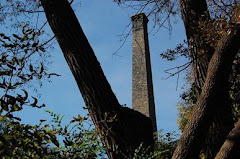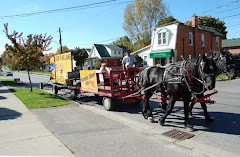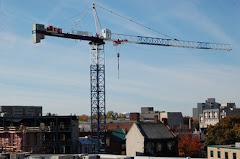Tuesday's meeting at City Council about the new old proposed development of 75 Dublin Street North left almost everyone involved with a sense of deja vu, but it also likely left observers with a few lingering questions. Let's consider the big three...
What the heck is this 'H' everyone talked about?
It's the Holding Bylaw, which, according to the Ministry of Municipal Affairs and Housing, restricts future use of a site until conditions are met. It can be used to give municipalities time to evaluate the impact of the proposed land use, to complete necessary requirements like a traffic study, or to minimize the impact on the community if there are issues of noise, odour, or some other interruption.
The trick is that in order to get an 'H', it has to be applied when a development is asking to amend a zoning bylaw, and then removed with a second bylaw amendment when all conditions have been rectified.
The City of Windsor has fairly straightforward explanation of the Holding provision:
Holding provisions may be applied to an amending by-law to delay development until local municipal services, such as roads and sewers, are in place. In these instances, a Holding ('H') symbol will precede the zoning category in the by-law.
Holding provisions may also be applied in order to achieve orderly staging of development, to ensure adequate infrastructure and community services and facilities are or will be available, to adopt measures to mitigate negative impacts, to satisfy policies of the Official Plan, to achieve the exchange of facilities, services or other matters set out in the Official Plan and to ensure the execution of legal agreements, approval of subdivision plans and/or approval of necessary studies. When development is ready to occur, the holding symbol 'H' can be removed by an amending by-law.
The crux of the situation is that when council approved the bylaw change in 2016, turning the 75 Dublin site from I.1 (Institutional) Zone to a modified D.2-9 (Downtown) Zone, there was no 'H' applied, and the 'H' must be applied in the vote that changes the zoning. So if you're looking for an explanation as to why Rykur Holdings would bring back to council the exact same development proposal that they rejected just 14 months ago, we might now have an answer to the question.
What was this letter to the City sent Monday morning?
There was some discussion at the meeting about an email that had been sent to staff and council on Monday morning, and as fate would have it, this email was shared with Guelph Politico. In it, Tom Lammer, the head of Rykur Holdings Inc., stated his preference that the City move forward with his plan to build the five-storey development at 75 Dublin, but he also offered an alternative.
"I wanted to let you know that I remain open to the option of a land trade with the City conditional on the City owning land surplus to its needs that is located within the Downtown Secondary Plan area, is zoned to permit a 5 storey apartment building, is not contaminated and is permit ready, that the City would be willing to trade in a timely manner," Lammer wrote.
Well problem solved, right? Not so fast.
DCAO Stewart: There is a list, not in the planning department, but in real estate, but there are none meeting Lammer's conditions at the moment.— Adam A. Donaldson (@adamadonaldson) February 28, 2018
Oddly enough, it's also the same problem that had no solution when Rykur's original development plan for 75 Dublin came up for review in 2016. The staff report dated November 28, 2016 said, "City staff has reviewed and filtered through all City-owned assets. While there are City-owned properties that are zoned residential and are comparable in size to 75 Dublin Street North, none of them would accommodate a building permit by April 2017 for a 5-storey apartment building. Therefore, at this time the City is not able to entertain a land swap that meets the property owner’s criteria."
So history has repeated itself in more ways that one. Even without the deadline, the City is saying that Lammer's offer of a land swap cannot be accommodated, at least not according to the parameters he's asked for. Lammer, undoubtedly, knows this, so is he trying to look amicable knowing that the City can't accommodate him, or does he have an alternative means of settlement in mind?
Why didn't the Upper Grand District School Bord just buy 75 Dublin?
This was brought up by both the representatives of Rykur at the meeting, and the letter from Lammer himself. "As stated in the previous City staff report on page 12, the Roman Catholic Diocese of Hamilton first offered the property to the Upper Grand District School Board to purchase, however, the school board declined to purchase the property to add it to the Central Public School property," he wrote.
The staff report from November 2016 does indeed say that that the Church reached out the UGDSB first. "Planning staff has also been advised by the Upper Grand District School Board that they were contacted by the Roman Catholic Diocese of Hamilton (the previous owners of the property) advising that the Diocese was interested in selling the tennis court property at 75 Dublin Street North prior to its sale to the current owner," it reads on page 12 of the report. "The School Board did not submit an offer to purchase the propertyat that time."
So why didn't the school board just buy the land and thus avoid the political and legal struggles? The UGDSB might have the funds, but there are some very tight restrictions on when and how any school board can buy land. For Wellington County, there's the Education Development Charges bylaw. Last revised in 2014, the bylaw allows for "the imposition of education development charges against land in its area of jurisdiction undergoing residential development," but those funds can only be used "to acquire land or an interest in land, including a leasehold interest, to be used by the Board to provide pupil accommodation," or, "to provide services to the land or otherwise prepare the site so that a building or buildings may be built on the land to provide pupil accommodation."
In other words, the UGDSB can only spend money on land in order to build a new school or expand an existing school, or to prepare a site or building for the purpose of creating new school space. This is not as straightforward as it sounds though, even if Central School wanted, and needed, to expand. If you've seen the arrival of portables at your neighrbourhood school and wondered why they didn't just build an addition or a new school, the UGDSB website explains:
Portables or relocatable classrooms are used to provide additional space at existing schools. The number of students in a school’s attendance area can fluctuate over a short period of time because of people moving into or out of an area or because of children moving on to a more senior level school. Due to these fluctuations, portables are used to add temporary capacity so that school’s can adjust to periods of higher and lower enrolment. Furthermore, there is often a delay between when the need for additional capacity is realized and when permanent capacity (new schools or additions) can be constructed. Portables are a flexible way to meet school capacity needs immediately.
Bonus Question: What's the status of the OMB appeal?
The motion to the Ontario Municipal Board was heard on November 17, 2017, as Rykur appealed the rezoning, as did the Upper Grand District School Board and Old City Residents Association in their own separate filings. On its website, the OMB still lists the case as "Open".


















No comments:
Post a Comment